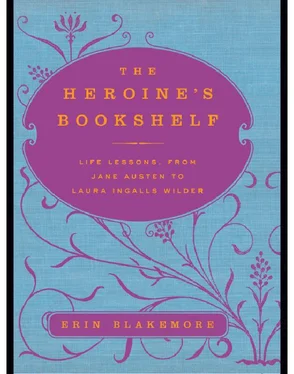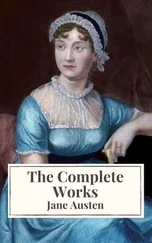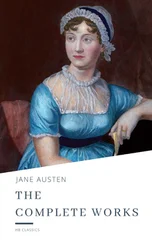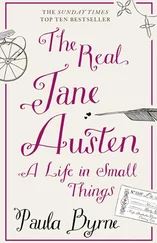• Over café au lait and a croissant at your favorite coffee shop
CLAUDINE’S LITERARY SISTERS:
• Linda Radlett in The Pursuit of Love, by Nancy Mitford
• Nancy Astley in Tipping the Velvet, by Sarah Waters
• The nameless main character of The Lover, by Marguerite Duras
Scarlett O’Hara in Gone With the Wind,
by Margaret Mitchell
Fighting is like champagne. It goes to the heads of cowards as quickly as of heroes. Any fool can be brave on a battlefield when it’s be brave or else be killed.
MARGARET MITCHELL, GONE WITH THE WIND
Margaret “Peggy” Mitchell was in fighting form, surrounded by dilapidated manila envelopes, which, stacked up, nearly made it to the top of her barely-five-feet-in-high-heels frame. Earlier that day, she’d been a smiling and enthusiastic hostess. But now the sweet woman that had ushered the literary scout Harold Latham around Atlanta had been replaced by an impulsive spitfire. Her eyes snapped as she held out a piece of her gargantuan manuscript. “Take it before I change my mind,” she said. She did change her mind, but not before Latham had been seared by the book she had given him. By then it was too late: her fight had unleashed a literary phenomenon, and all because a snide friend had doubted her ability to write.
When asked to show Latham around Atlanta in April 1935, Peggy reluctantly agreed. Once she was roped into the task, though, it just wasn’t in her nature to deny a perfect stranger all the hospitality a Southerner could muster. She took him from social event to social event, introducing him to everyone she knew, charming him with the dexterity of an experienced hostess. When Latham implied that she herself might have something juicy to show him, she tried to hide her impatience. No, no, she dissembled; she was just an ex-journalist, not a novelist. But then the forces of literary history struck, delivering an insult that would change the course of Peggy’s life forever. A sharp-tongued friend overheard and interjected, her voice laced with sarcasm. Peggy had written a novel, she said, though she wasn’t sure how someone as frivolous as Margaret Mitchell could have much to say about anything at all.
Peggy laughed along with the others, but inside she was seething. When she finished dropping off Latham, she catapulted around her apartment, looking under desks and inside closets for the piles of manuscript she’d been accumulating for the last ten years. The manila envelopes had been hidden under towels, used as footrests and coasters and doorstops. They were coffee-stained and discolored with age, some still sporting handwritten notes to self. Now they were thrown into the car. When she finished handing them off to Latham, she was overcome with relief and a bit of fear: maybe this time she had gone a bit too far.
But Peggy was used to a rousing fight. It seemed she’d been on the offensive since before she formed her first coherent memories, for though her life had followed the simple trajectory of a Georgia debutante for the most part, her boisterous insides had never really matched the polite Southern girl she was supposed to portray. Atlanta, Georgia, was a place where name was everything, where a girl acted and thought like other girls if she wished to stay afloat. Externally, Peggy managed to be everything that was expected of her: gracious, inviting, a good conversationalist, and an expert flatterer. But the tiny body that obediently danced, sat, and played along concealed a defiant, unruly mind.
She inherited some of her uppitiness from her mother, Maybelle, a suffragist who warned her not to give over her life to that of some man. “Give of yourself with both hands and overflowing heart,” she wrote to Peggy just days before her death of Spanish influenza in 1918, “but give only the excess after you have lived your life.” Peggy had struggled with her mother’s unflappable sense of authority and her unerring knack for knowing just what to do; now she tussled with her advice. Ultimately, she defied it. Once her mother was gone, she had a chance to take the helm of a respectable Southern family, even if it meant leaving college and taking on the dull social duties expected of a matriarch. She snatched up the opportunity, never suspecting it would be one of her life’s first battles.
Peggy knew that any brainy girl could win the battle of Society, with a capital S, so long as she had cute clothing, a knack for conversation, and a whole lot of gumption. She possessed all these things, but that didn’t mean that managing the role left so empty by her mother’s death came easily. Not only did she have to oversee the upkeep of a large house for her father and brother, two men unused to any kind of tumult, but she had to tackle a social landscape fraught with suspicious matrons, gossiping “friends,” and plenty of men. The latter were a battle she rushed to fight and conquer, prevailing again and again. She was quick to assemble her own army of slobbering suitors, men who hung around her house dejectedly, called constantly, barraged her with unwanted correspondence, even crowded around her sickbed when she was in the hospital. These were men who hung on her every breathless, flattering word. And juggling their affections was just about the easiest thing she faced in the years that followed.
Already an outsider due to religion (her mother was a devout Catholic), a Northern education at Smith College, and a socially inept grandmother who didn’t care about her powerful enemies, Peggy struggled for acceptance in Atlanta. It would have helped if she’d actually cared what anyone thought of her, but that was one part of playing along she just couldn’t fake. Small in stature but long on personality, she struggled to embrace her role as sweet little debutante. Women had won the vote, but they weren’t encouraged to express their own opinions, of which Peggy had many. Bored by her constant battles to fit in, she began to act out.
The Roaring Twenties suited Peggy perfectly. She took her newfound flapper role to heart, scandalizing her elders and getting the papers talking along the way. That in and of itself was a novelty: women were supposed to shy away from overt publicity as they would a leering rapist or a muddy gutter. But Peggy embraced, even encouraged, the newspapers’ interest in her dubious relationships and wild habits. 1921 may have marked Peggy’s uncertain debut into society, but she did far more than attend balls and appear at community service events. The exclamation point to the new debutante’s hell-raising year was a performance of the violently sexual Apache dance at a ball. Soon, she had added “banned from the Junior League” to her flapper résumé. Next stop: marrying against her father’s will. Red Upshaw was dangerous, erratic, and, as it later turned out, violent. He was also handsome and rakish, just the kind of man Peggy was attracted to, and just the person to save her from the oppressive boredom she already associated with Atlanta high society.
Her new marriage was far from boring, but that wasn’t a good thing. Red couldn’t hold down a job, and his violence and provocation prompted constant arguments. To top it off, he was a bootlegger and rum-runner, a fact that mortified Peggy. She had married to escape; now she was as trapped as she had been at the head of the table in her father’s home, where the miserable couple had been encouraged to set up housekeeping. Sick of appeasing her inconsistent husband, she opted for full-out warfare, and writing was her first offensive. She landed her first freelance newspaper writing gig at a local newspaper, her flamboyant byline of “Peggy Mitchell” deliberately making no mention of her married name.
Читать дальше












